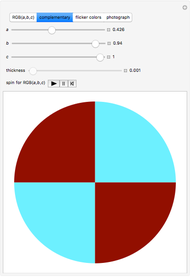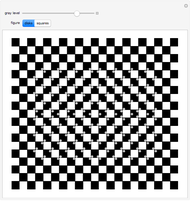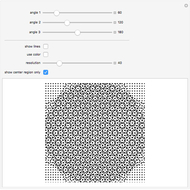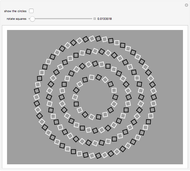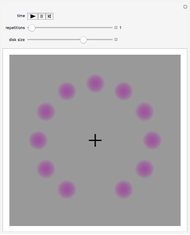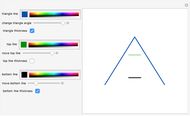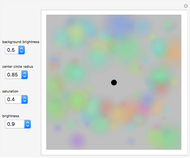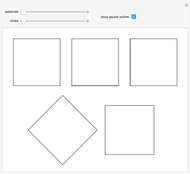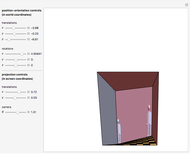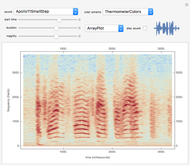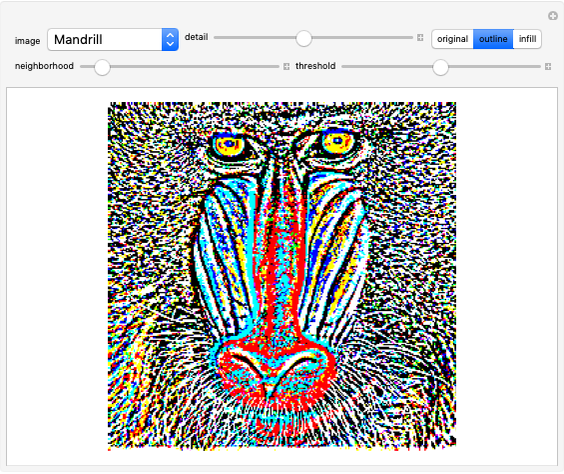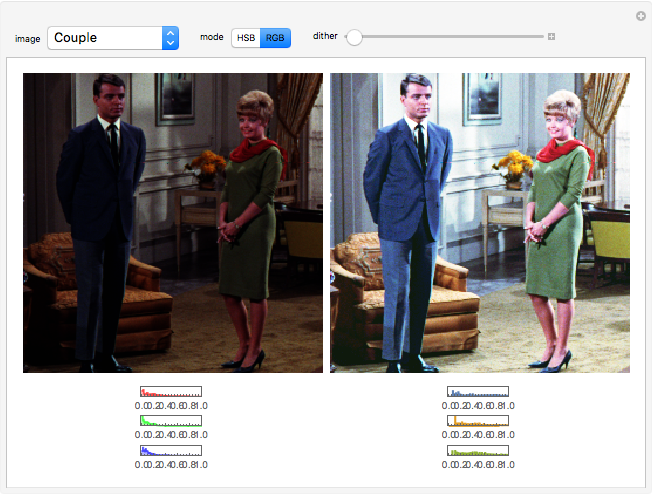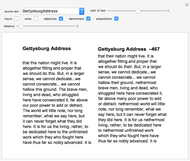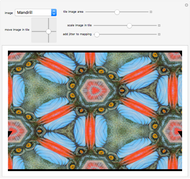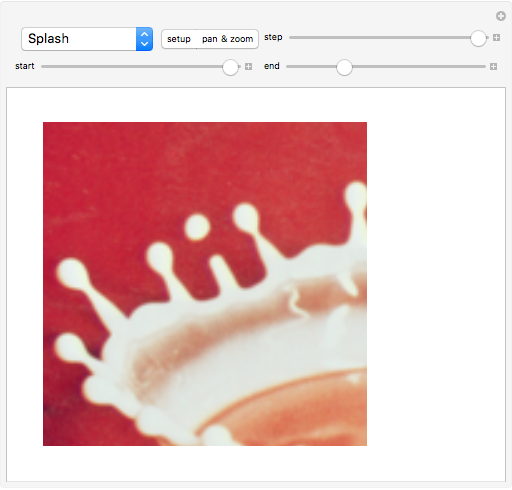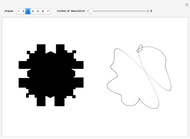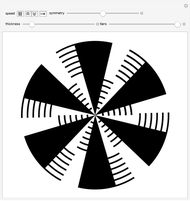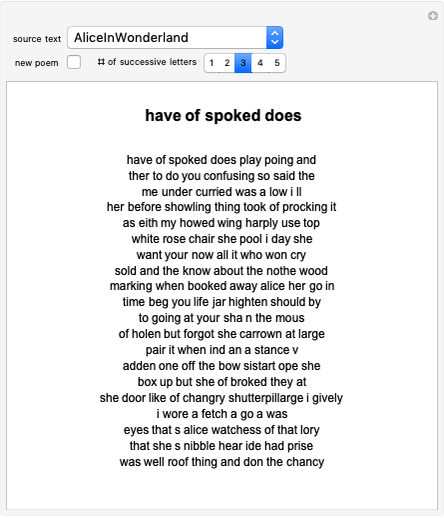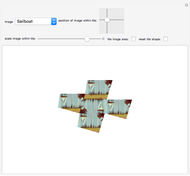Flicker Colors

Requires a Wolfram Notebook System
Interact on desktop, mobile and cloud with the free Wolfram Player or other Wolfram Language products.
Flicker colors are optical illusions caused by motion. In this Demonstration, the rotating figure is black and white, and it appears black and white when it is still or when rotating slowly. If you increase the rate of rotation (by clicking the double up arrows a few times), you will begin to see yellow in the inner half and blue in the outer half (or vice versa). There is an optimal rotation rate where the effect is most prominent. If you reverse the rotation (by clicking the right or left arrow) the colors will change locations, with the yellow region becoming blue and the blue region becoming yellow. You can change the number and thickness of the tiers, and you can change the number of the solid black regions using the symmetry slider.
Contributed by: William Sethares (January 2012)
Open content licensed under CC BY-NC-SA
Snapshots
Details
According to Ings, flicker colors were discovered in 1826 by Benedict Prevost, a French monk. The effect was popularized by toymaker C. E. Benham, who sold small wooden tops with black and white patterns on a surface that mysteriously appeared colored when spun. Early scientific work on flicker colors was carried out by Fechner in the late nineteenth century. More recently, researchers have attempted to explain the appearance of the colors as due to the different rates at which color receptors of the eye respond to motion [2].
References
[1] S. Ings, A Natural History of Seeing, New York: W. W. Norton and Co., 2008.
[2] J. Schramme, "Changes in Pattern Induced Flicker Colors Are Mediated by the Blue-Yellow Opponent Process," Vision Research, 32(11), 1992 pp. 2129–2134. doi:10.1016/0042-6989(92)90074-S.
Permanent Citation
"Flicker Colors"
http://demonstrations.wolfram.com/FlickerColors/
Wolfram Demonstrations Project
Published: January 5 2012






